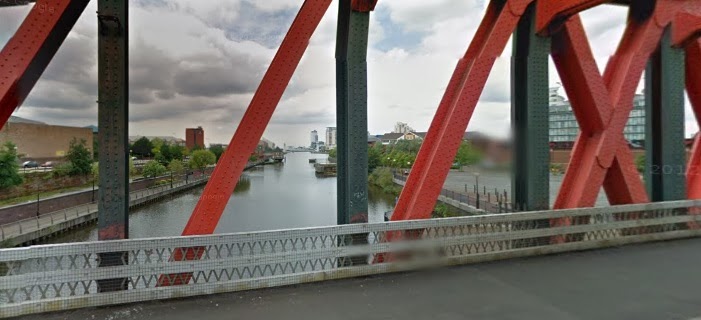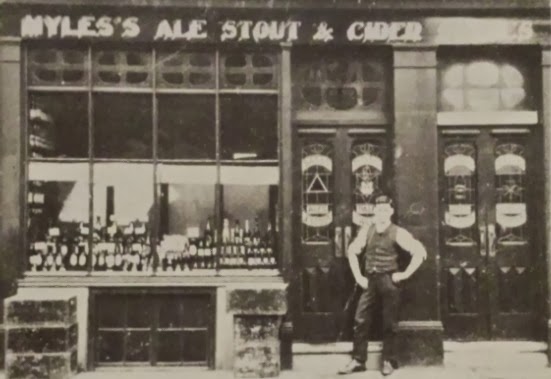Tatton Arms, Boat Lane, Northenden, 2007. (c) Keith Williamson at geograph under Creative Commons.
The Tatton Arms is a huge old pub on the banks of the River Mersey on Boat Lane at Northenden, but sadly it's been closed since 2007. It's in a sorry state having been vandalised - possibly by the same rough lot who frequented the pub towards the end - and left to rot by its irresponsible owners.
Tatton Arms, Boat Lane. (c) David Dixon at geograph under Creative Commons.
The Tatton Arms was originally known as the Boat House Inn, as shown in these two photos from 1898. The boat house that gave the inn its original name still stands today and was last known to be in good repair and in use by a local theatre company.
Boat House Inn, Boat Lane, 1898. (c) Manchester Local Image Collection. Click here to view full image [1].
It is a well-photographed landmark in South Manchester, seen here in 1937, in 1967 from the other side of the River Mersey, and twice in 1971 with that looks like a Wilsons sign. The Tatton Arms later became a Chef & Brewer house. From some angles, like looking at the Northenden Wier, the Tatton Arms resembles a remote country pub.
Tatton Arms, Boat Lane. (c) laivakoira blog.
The Tatton Arms gives its name to the footbridge which crosses the River Mersey in front of the old pub, which is still in use today despite the car park to which it leads being fenced off.
There used to be a rope-pulled ferry across the Mersey here, and then when the bridge was built, it was a toll-bridge with toll-booths at each end [2].
Tatton Arms from Tatton Arms Footbridge. (c) Gerald England at geograph under Creative Commons.
The Tatton Arms faces an uncertain future, and with an apparent lack of protected status, will surely face demolition like most of the other giant Wythenshawe pubs have. You can catch a glimpse of the old Tatton Arms without going to Northenden if you keep an eye out when passing on the M60 (as a passenger of course).
Tatton Arms, Boat Lane, 1930s. (c) With permission from Northenden Old & New [3].






























.jpg)


.jpg)










+-+Summer+1968+(2).jpg)


.jpg)











